This week for the Wednesday Ad Break we’re going to talk about worktops as part of a collaboration with Caesarstone who make engineered quartz worktops. I posted a friend’s kitchen which has their rugged concrete tops the other day and it was my most liked Instagram post ever (see below) Which wasn’t at all miffing given that I have a Caesarstone worktop of my own from a previous partnership with them.
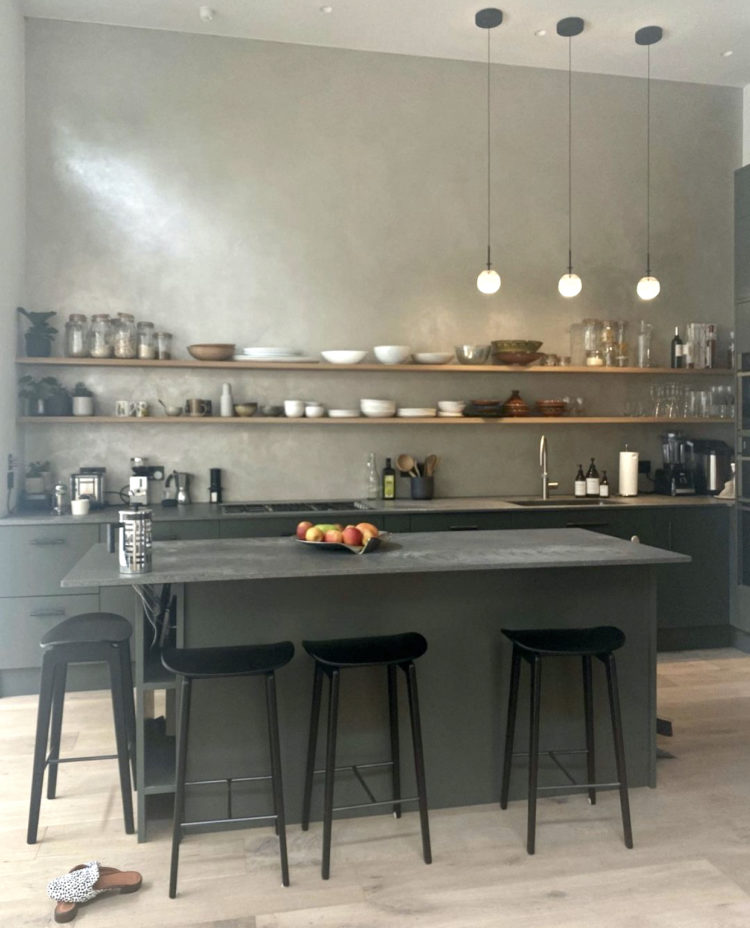
But why is it that the worktop is so rarely credited in magazine images? We always ask about the company that made the kitchen. We might rave about the colour. We might ponder the best type of worktop material when we are buying for our own projects but it tends to be the taps, appliances and cupboards that are singled out as elements to focus on.
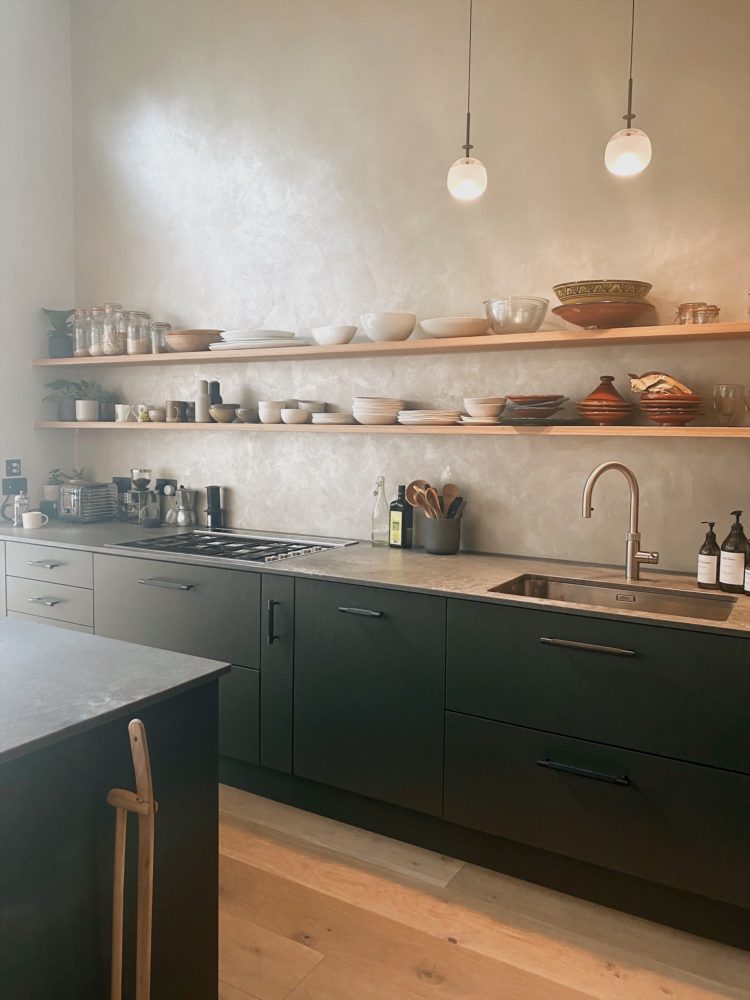
And yet isn’t the worktop one of, if not the, most important element in a kitchen? It’s the largest surface (after the floor) so it takes up the most eye space (if that’s a thing) and it’s also the part that really gets used and abused, from water and cleaning materials to hot pans and chopping knives. It has to deal with all of that and still look good. It is the ultimate marriage of form and function.
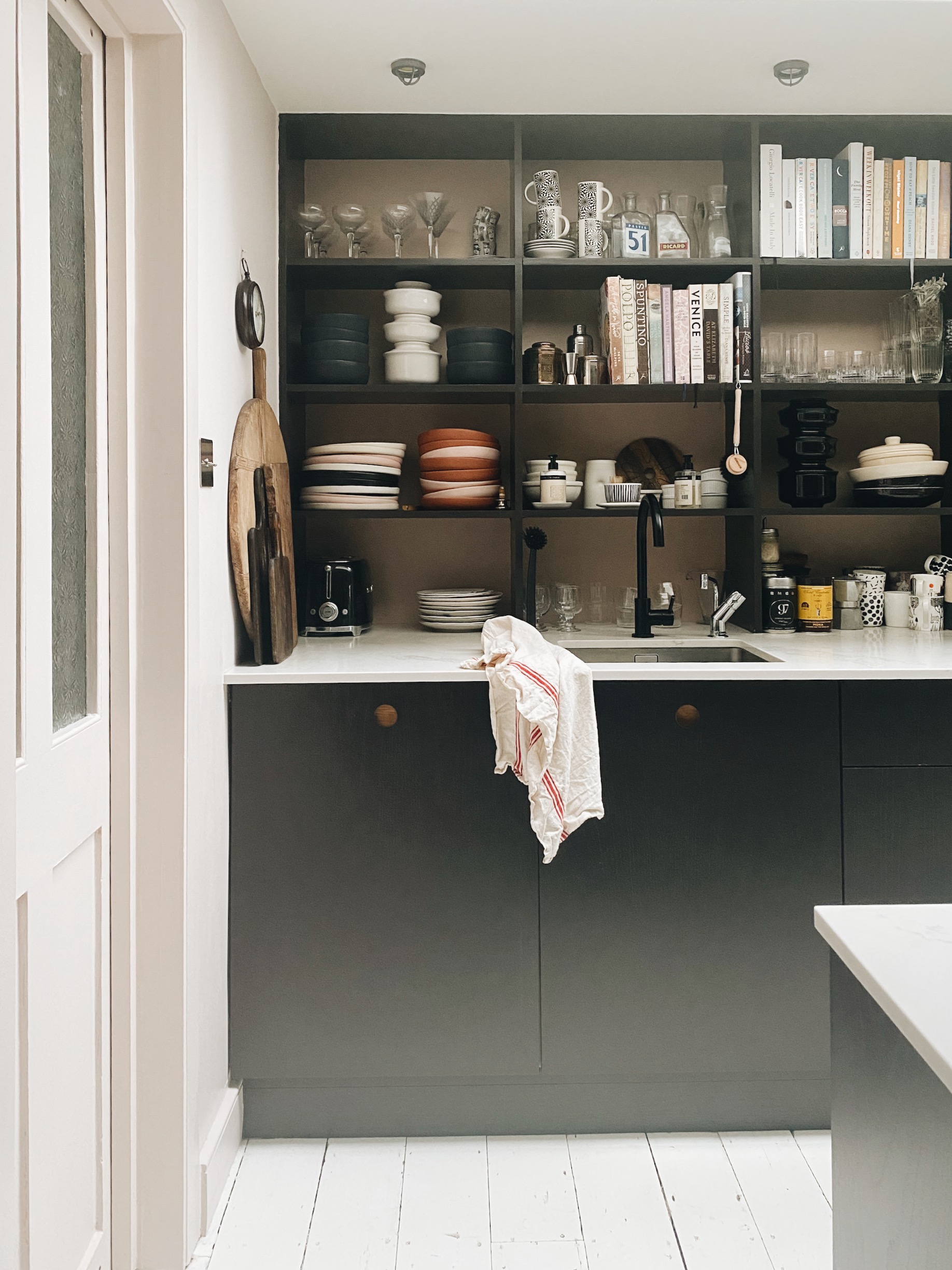
It’s also expensive to change. We might give a kitchen a makeover by changing or painting the cupboard doors or replacing the handles (I currently need a new tap as mine appears to be leaking) but, to coin a phrase, a worktop tends to be for life not for the life of a trend.
So why quartz?
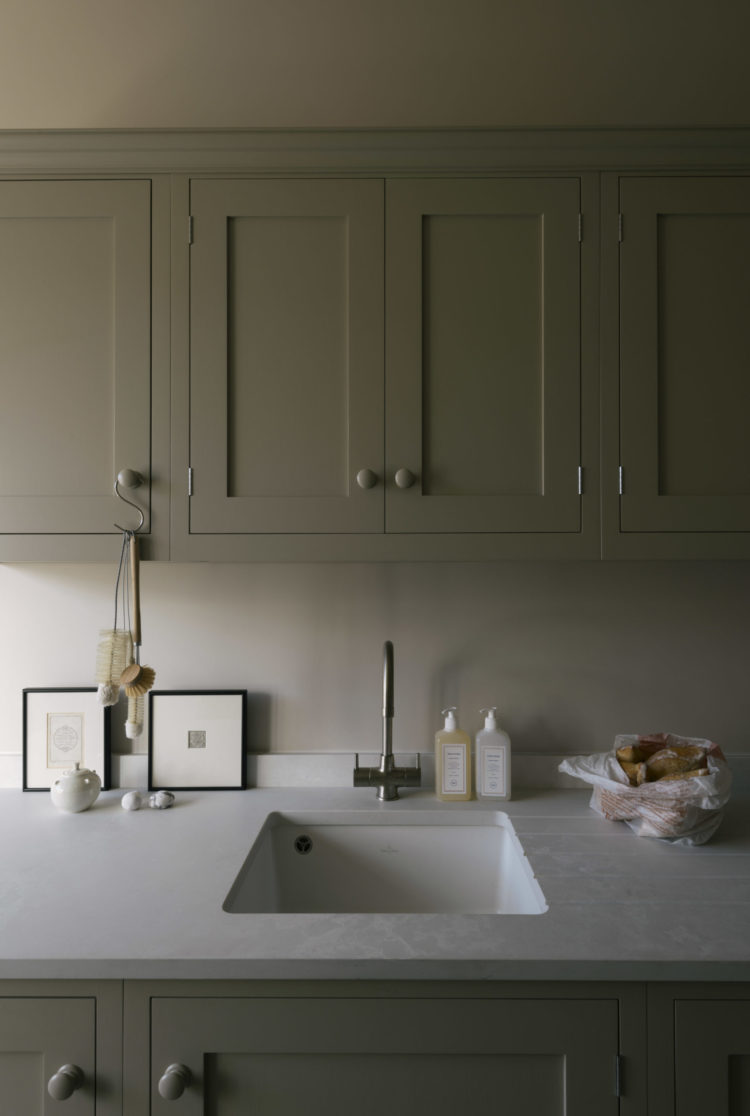
Well there are, of course pros and cons to every surface and you need to establish how you use your kitchen to know what will work best for you.
I have had a wooden worktop which is, of course, warm and tactile and natural. But it needs maintenance; it doesn’t like water. Or hot pans. So that’s two of the basic elements of a kitchen you need to look out for. Although I saw a clever idea the other day where a small block of Caesarstone was placed around the taps to protect from water damage.
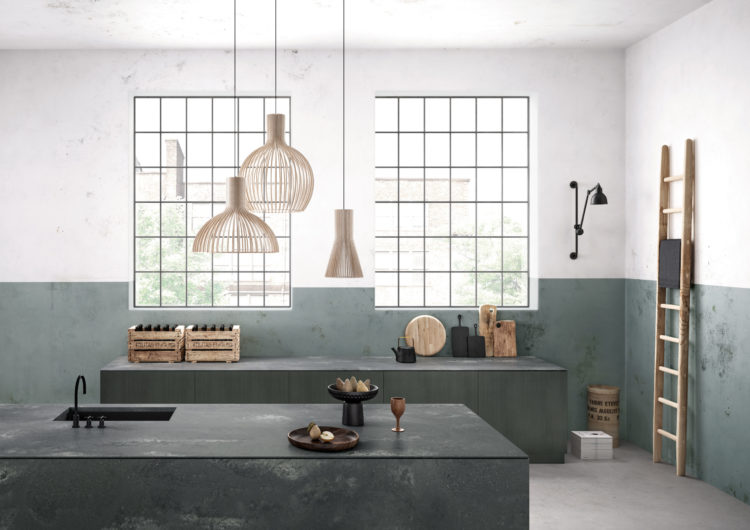
If you do want wood, then consider using it on an island or bar area where it doesn’t have to interact too much with the actual kitchen part of the room and might be nice to lean on while you sip of a glass of something refreshing. Possibly with bubbles. Because if you can’t drink something sparkling in a pandemic when can you?
I have also had a stainless steel worktop which I loved for many years. It’s tough. It’s what restaurants use. It doesn’t mind hot or wet. In fact, the most damage mine ever sustained was a small dent when I dropped a heavy pan on it. It can also be wrapped around a stainless steel sink to create a seamless, and hygienic, finish. But it does look very industrial and it’s not for everyone. It’s also cold to lean on when you’re sitting around making that sparkling conversation.
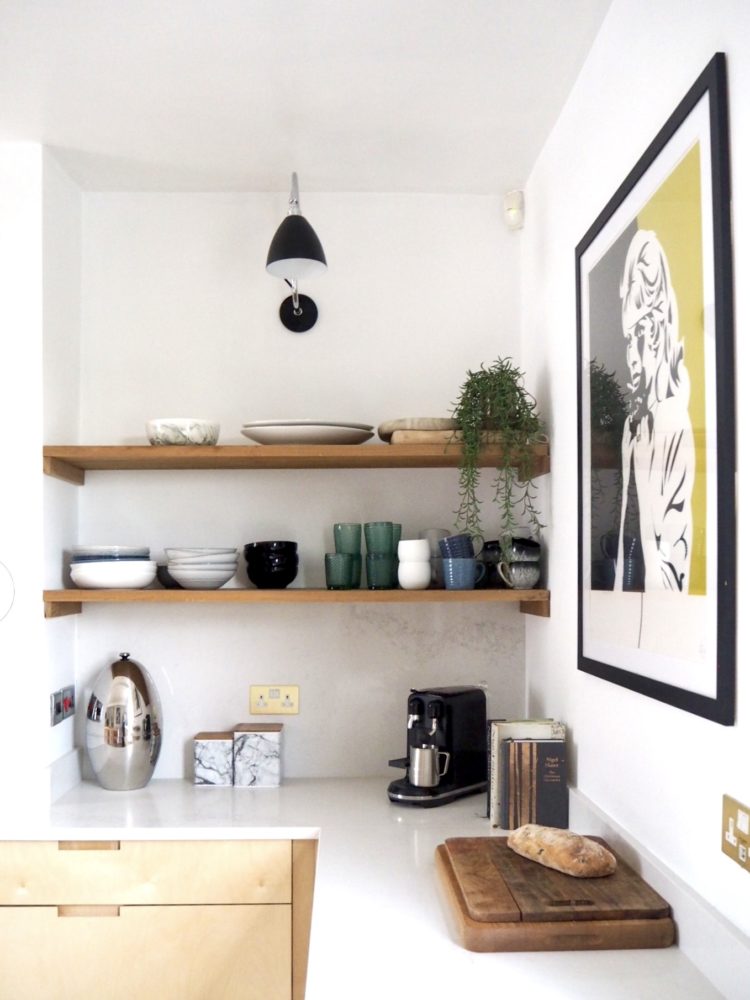
But what about marble and granite, the natural stone worktops? Years ago, this was regarded as the best of the best. Because it was a natural material. These days that comes with a non-renewable source health warning, which needs to be factored in to all our interior design decisions now. Yes, both are very beautiful. But they are also both a bit touchy. Natural stone is porous so it will grab that spilt turmeric and red wine and soak them right up. A slice of lemon might also mark (one former client of mine had lemon wedge shaped stains all over her dark granite). You need to be good at the fast clean up and committed to regularly resealing. Although granite is definitely tougher than marble and those that have it (and have often had it for years with no plans to replace it) love it and will defend it vociferously.
Concrete is another popular choice but be warned, it’s more expensive than you might have thought. It’s also heavy – when I mooted replacing the stainless steel with concrete on top of my Ikea cabinets my builder said we might need to reinforce them first. It will also need sealing although once is usually enough.
And so to quartz as made by Caesarstone. This is an engineered stone which does not naturally exist in its finished format. Natural quartz is a hard mineral and the crystals are ground into a fine dust and combined with resins, polymers and pigments to create the material that is used for worktops.
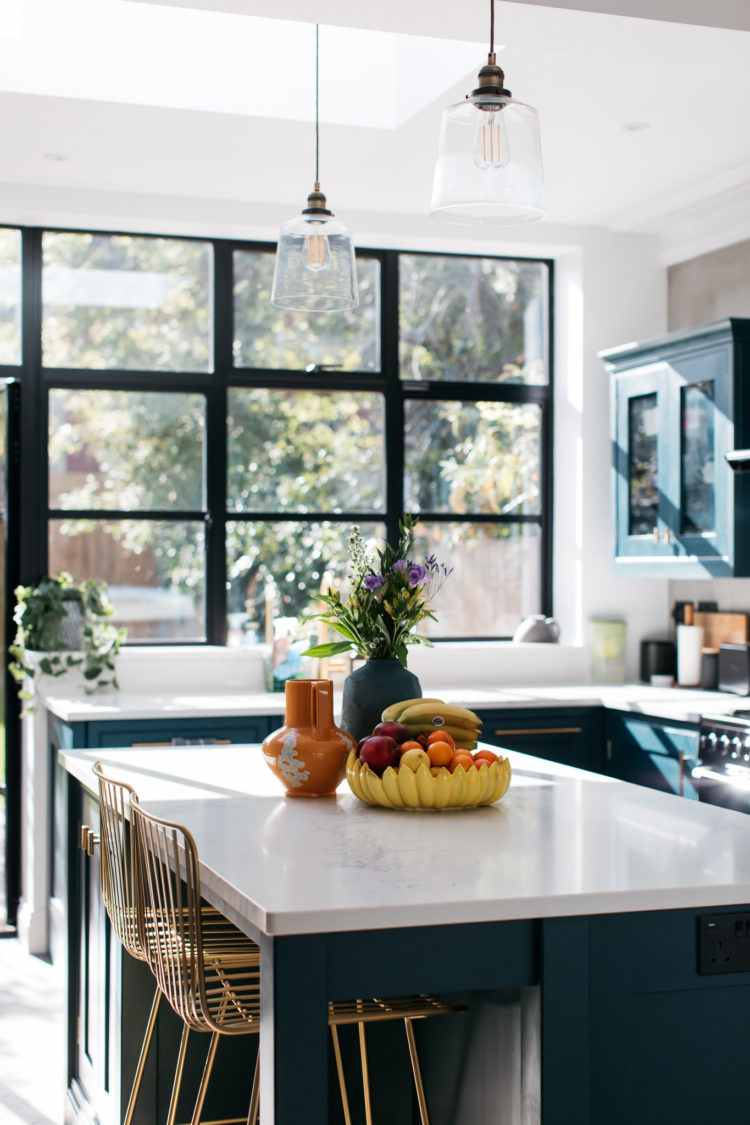
Its final appearance can change according to coarseness of the ground crystal from the rougher texture of rugged concrete (see above as this might make a good alternative to actual concrete) to the smooth polished feel of statuario maximus (also pictured). It can be made to look like marble or granite or concrete with a variety of finishes. The pattern also runs all the way through (it’s not just printed on the top) which enhances the feeling that it’s a natural stone. Mine looks like marble and actually I like it slightly more than the traditional Carrara marble (which I have in my shower) because, unlike that which is grey, this is a soft off-white shade which is warmer both to see and touch.
It is incredibly hard and durable and, crucially, non-porous and resistant to cracks and stains. It doesn’t need sealing or resealing and it’s naturally scratch resistant (unless you’re wearing diamonds, sapphires or topaz… dahling).
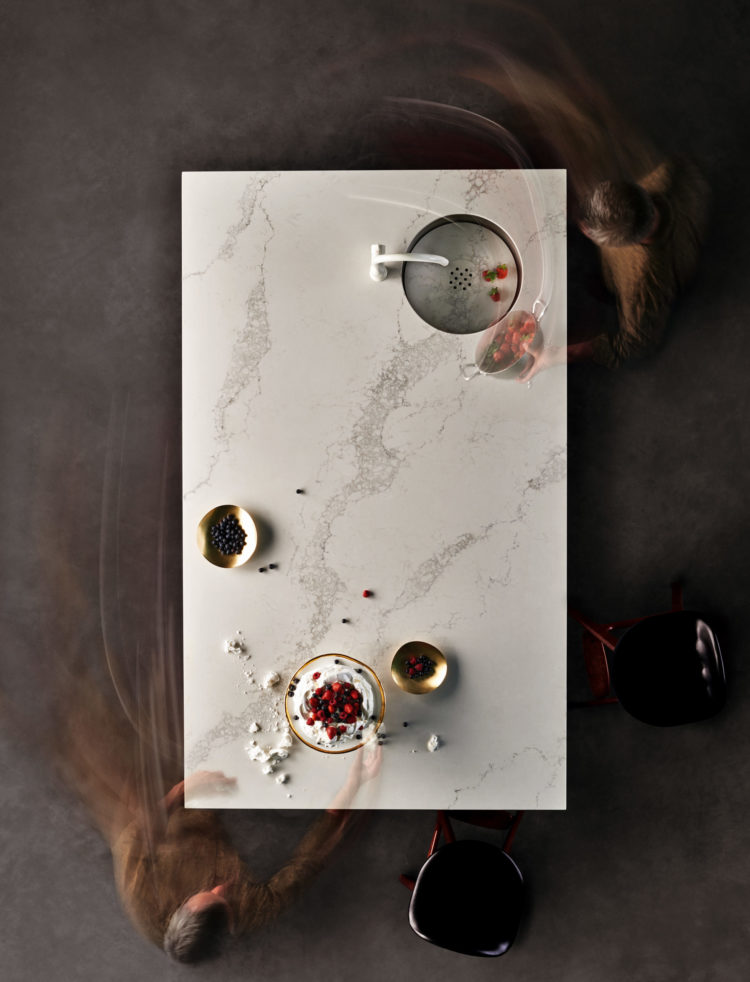
So next time you are swooning over a kitchen look beyond the pretty colours and consider the worktop. Maybe that’s where you should be starting from.
FROM THEIR WEBSITE: All Caesarstone quartz products are independently certified by the GREENGUARD Certification, which is part of UL Environment, a business unit of UL (Underwriters Laboratories), as low-emitting surfaces. Read more about their environmental credits here
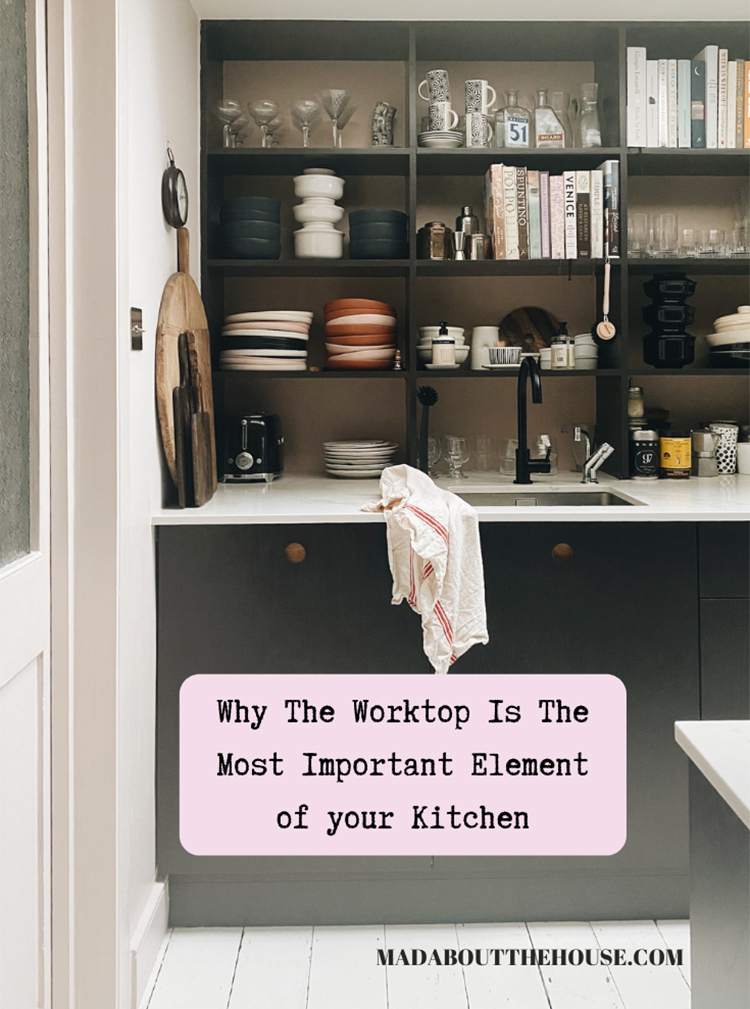

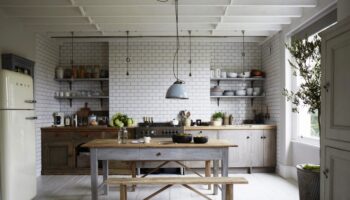
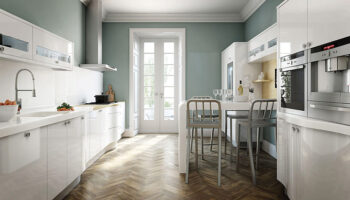
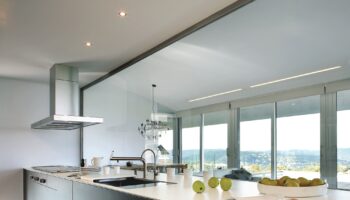


Very nice information about worktop in kitchen. Thanks for sharing
We still love the 12 year old Caesarstone worktops and splashbacks in our kitchen. So much so that we used offcuts for a bathroom basin stand and bath surround. We are considering installing an ensuite shower room in our loft, and I am rather keen to see if Caesarstone can be used for the floor and possibly even the walls. If anyone has any experience with creating a Caesarstone shower room or wet room then I’d be delighted to hear about it. Re wear and tear, yes a heavy pan can cause a chip, but contact the company directly – we found them very helpful.
Good timing Kate as I’m choosing a new worktop now – my preference was for quartz so happy to have your opinion – thank you
moy
Silestone is simply a competitor to Caesarstone Erin. Marks on the surface can be cleaned with Cif cream cleaner.
I have yet to discover how to remove chip damage on the edge of the work surface. Any advice welcomed.
Is Caesarstone the same as silestone? That’s what our countertops are made of, except for the island, which is oak. (I love the look of wood, but it REALLY does hate water, egg, honey, and, I’ve recently discovered, gin. Despite only being installed in July, ours already has permanent splatters that I’m trying to convince myself give it character. We purposely avoided using wood on the main countertops for the reasons stated above)
We are planning on replacing our, Formica yuck, counter top with butcher block counter tops. We found them on Facebook marketplace. 3 pieces, 8 foot by 25 inch for $100 each! They have a few screw holes but mostly new because apparently they were the wrong size for their project. Our win! Thank you for the tip about water. We plan on sealing them with tong oil. Cross fingers it works. Have you heard any positive reviews about sealing butcher block with tong oil? Thank you!
We made a kitchen with butcher block in 1997. I sealed it with Danish Oil. (Google Tung Oil vs Danish Oil to see what suits you.) Either would work but I think Tung Oil may have the upper hand.
In those days I used to be quite meticulous and re-apply the seal every 6 months or so (even tho I had small babies back then!).
In our current 2008 kitchen (and in one bathroom), I used butcher block again but, in my dotage, I have become very lazy. Not re-applying some sort of seal (I used Osmo Oil at the outset) regularly has allowed water staining (blackened wood) around the sink area. The rest of it looks absolutely fab (except for Dettol and vinegar stains – be warned !).
While Osmo Oil is by far the more eco-friendly option, it doesn’t have the staying power that the high VOC Tung & Danish Oils have. Especially if you become a lazy person like me 🙁
The whole looks lived-in, relaxed, and well-used, but when we sell the house, I think I will attempt to sand the surface until I have a more evenly coloured area around the sink : with a 3.8cm thickness of wood, I reckon I have some to play with !
I’ve used Caesarstone is two different homes. The first was a remodel of a 1970’s wreck. Not only did we choose Caesarstone for the counters, but at the suggestion of the contractor, it was used as the backsplash. Perfect, no grout lines, easy to clean.
Secondly, we built our retirement home 4 years ago and used 2 color choices, black on the white cabinets and white on the dark brown island cabinets. We love Caesarstone. It wears very well, no issues.